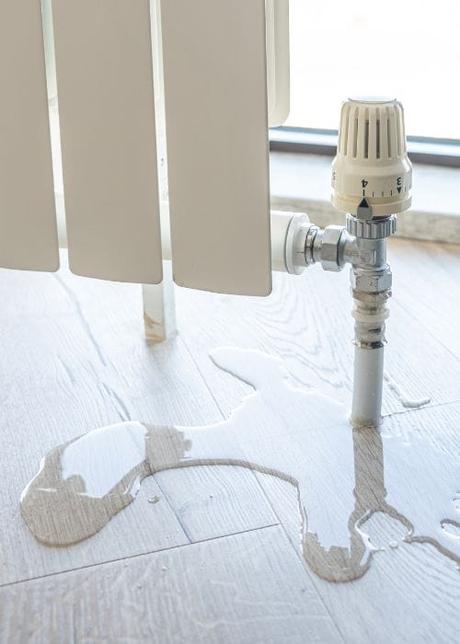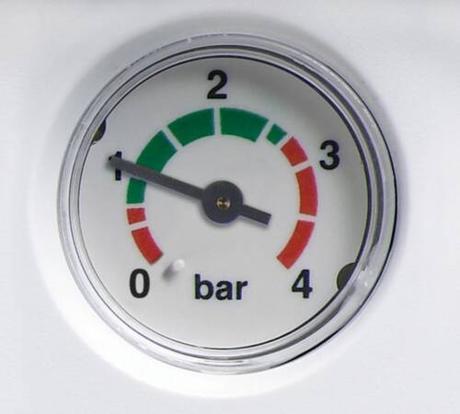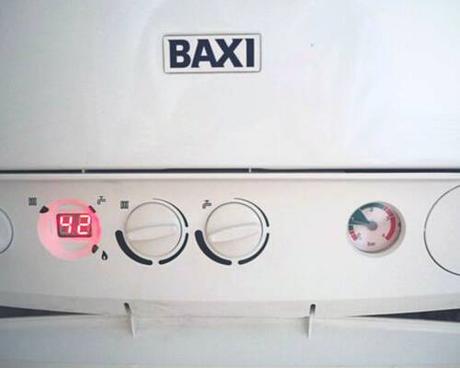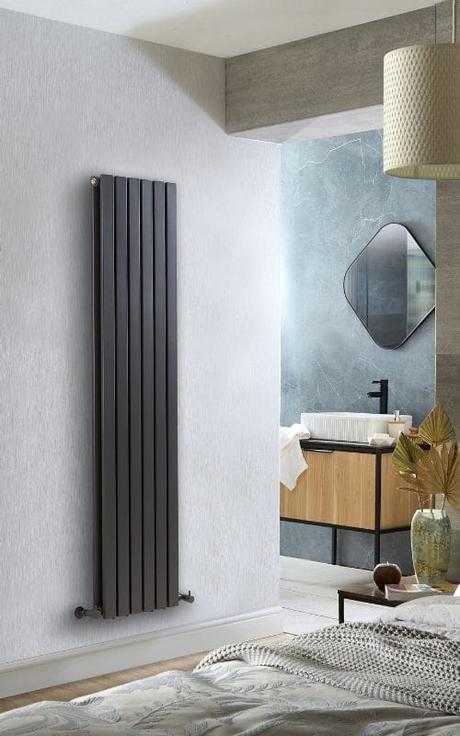What we'll cover...
• Frequent causes of radiator heating problem
• Troubleshooting tips for single cold radiators
• Fixing issues affecting multiple radiators
• How to deal with new radiator installations
• When to seek professional assistance
How to address radiators not switching on
At the coldest and bleakest times of year, there really is no bigger home heating-related nightmare than the central heating not coming on. Or, a radiator not working. Trust me, I know. When my boiler was on the blink I had to wait 3 DAYS until Baxi would send someone out to it!
But that aside, what should you do if you have a radiator that isn’t working? Or, multiple radiators that are not heating up properly?
Well, before you panic (or freeze), there are a couple of things you can try to get your central heating back up and running again without expensive repair costs. Sadly, forcing the Baxi men to come under threat of execution isn’t one of them (I know that now, too).
Anyway, enough of that. Let’s look at the reasons why your radiators might not be working. Plus, how to fix one or more radiators that are not heating up.
Why is one radiator not working?
If you come across one radiator that isn’t working, there are a couple of common causes and quick fixes you can try. But before you start, go and check if all your other radiators are working too.
If all your radiators are not getting hot, that is probably a sign that a bigger problem is the cause. We will cover these later. Firstly, here are the main reasons why one radiator might not be heating up.
Trapped air in the radiator
If only one radiator is not working, the most likely reason is that there is trapped air inside. The air rises and stops the radiator from heating up properly by displacing the hot water. That’s why you will notice that the radiator feels cold at the top and warmer at the bottom.
To remove the trapped air you need to bleed the radiator. Take a radiator bleed key or a screwdriver and unscrew the bleed valve at the top of the radiator.
Keep turning and you will notice a hissing noise as the air is released. When you spot water coming out, tighten the bleed valve back up. For more advice, head over to our how to bleed a radiator guide.
Sludge inside the radiator
If one of your radiators feels cold at the bottom and hot at the top, there might be sludge inside the radiator. Sludge is a build up of rust, dirt and debris that collects over time and sits along the bottom of the radiator stopping it from working properly. To remove the sludge you will need to flush the radiator. This will remove the build-up of corroded materials inside that is causing the issue.
Here’s a quick guide to cleaning a radiator out, manually.
- Switch your heating off and wait for everything to cool down.
- Close the ‘lockshield valve’ so you can remove your radiator from the wall.
- Remove the ‘thermostatic radiator valve’ and open the bleed valve with your radiator key.
- Remove the radiator from the wall and tip out the content into a bucket.
- Take the radiator outside and spray a hosepipe through each of the inlets/outlets.
- It’s important to mention that dirty water is going to come out of your radiator when you do this. So be sure to have towels or bowls and buckets around to catch the stuff as you’re taking it outside.
A leaky radiator
If one radiator is not getting hot, there could be a small leak on the surface, at the bleed valve or where the valves connect to the pipes. Leaks can be caused by a loose connection. But if sludge is left inside the radiator for a long time it can eat small holes out of the metal and create pin hole leaks.
To fix a radiator leak at the valve connection, simply try tightening the nut with a wrench. Or, if you find the location of a pin hole leak, you could try using a leak sealer to block it up. However, if the corrosion has caused severe damage, the leak may not be able to be repaired. In this case, the radiator will need to be replaced.
Faulty radiator valve
If the entire surface of the radiator is stone cold, the problem could lie with your thermostatic radiator valve. If you believe this to be the culprit, take its head off to check to see if the pin that operates it is still in full working order.
The pin should move up and down pretty freely. You’ll only need to give it a little tap if it is stuck in place. Keep in mind that you will need to be careful when handling your TRV.
If you try to use too much force when attempting to release the pin, you can cause damage that results in water flowing out of the opening. If you do this, you will need to buy a new TRV.


All radiators not heating up
If all your radiators are not getting hot, check if anything unusual is happening with your central heating. It might sound a bit silly, but have you turned your heating on? This is actually one of the more obvious things to check. But you’d be surprised how often it is overlooked. So it’s definitely one place to start! Here are the other reasons why all your radiators might not be working.
Incorrect boiler pressure
If you have a combi boiler or a high-pressure central heating system, it could just be a case that the pressure in the system has dropped and the boiler has cut out.
Check that the pressure dial is in the range that is specified in the boiler’s instruction manual and top-up the water if necessary. There should be a step-by-step guide in the manual to do this. Or, you can find information in our boiler pressure guide.
Is your boiler on and the pressure gauge in the right place, but you’re not getting hot water or hot radiators? The chances are you’ll need to call out the professionals and get it looked at as soon as you can.
And when I say “as soon as you can” I hope you don’t have a three-day wait to look forward to, like I have had! Can you tell I’m not entirely happy about that? Thanks, Baxi!
Boiler error
Is the pilot light lit in your boiler, is an error code displayed or is it malfunctioning? If you notice something unusual about your boiler, it may need to be reset. You can usually follow the instructions on the front panel of your boiler to correct the error code. But if you are unsure, head to your boiler manual or contact the manufacturer.


Sludge in the central heating system
Sometimes, simply cleaning out a single radiator isn’t enough to get the central heating system back into tip-top working condition. Especially if you find that all the radiators are not working.
When this happens, there is only one course of action for you to take – the dreaded powerflush. Now, you can do a powerflush all by yourself if you’re the sort of person that likes to get their hands dirty. But it’s probably best to leave it to the pros.
A powerflush works by attaching a unit (like the one above) to the piping of your central heating and pumping clean water into the system. This should force all of the dirt and debris from the out of your radiators and means you don’t have to remove any to get the job done.
A standard powerflush should take around 5 hours to complete. But we do highly recommend getting a professional to do the heavy work.
Faulty diverter valve
If your hot water is working but the radiators are not, the diverter valve might be broken or stuck. The diverter valve sits inside the boiler and directs the flow of hot water to either the central heating system or your taps depending on what you need.
Occasionally the diverter valve can get stuck in the tap position. This is why the hot water will only run to the taps and not the radiators even if you turn the heating on. If you think this is the case, contact a Gas Safe Registered Engineer to take a look at the boiler.
New radiators not heating up
If your brand new radiators are not heating up, it’s easy to panic. Your first thoughts will probably be that the issue is with your new purchase. But that is often not the case. If your new radiator isn’t working, the problem is likely with the central heating system. Here’s what you can do if your new radiators are not working:
Balance the heating system
If your radiators do not heat up at the same time, or if your new radiator doesn’t heat up at all, you will need to balance the system. This is a simple DIY job that involves adjusting the lockshield valves to balance the flow of water to each radiator. Head over to our radiator balancing guide to find out how to do it.
Bleed the radiator
If your new radiator has just been installed and it isn’t heating up properly or feels cold at the top, you will need to bleed it. It is normal for a new radiator to need bleeding after it has been installed. Simply because it is easy for air to get inside the pipes when the old radiator is disconnected and the new one is hung up. Remove the trapped air from the new radiator with a bleed key or screwdriver.
Check the boiler pressure
As we mentioned, earlier when new radiators are installed, air can get trapped inside the central heating system. This can cause the boiler pressure to increase above the optimal level. Check the pressure gauge on the front panel of the boiler. If the pressure is too high and displayed in the red zone above 2.5, you will need to repressurise the system.

You’ve tried everything!
If you’ve done all of the above and you still can’t seem to get that radiator hot, perhaps it’s time to move to a new house!
Only joking.
If you have gone through the list above, though, and still find your radiator(s) is not getting hot, the best thing for you to do is to contact a professional heating engineer.
An experienced engineer is likely to have seen most of the central heating radiator problems before. So a good one should be able to diagnose the malfunction pretty quickly.
To find a good quote in your area, there are loads of places to look, but if they are working with gas central heating, be sure to use a fully qualified and registered Gas Safe Engineer.
Good luck with your radiators, but remember…
Of course, we wish you all the very best with fixing your radiator problems. But if you just can’t seem to get it sorted or even if you just fancy a change, pay us a visit! Get your hands on some amazing radiator and towel rail deals at the UK’s leading designer radiator specialist. Everybody should love their radiators, and you should be no exception!
Frequently Asked Questions
bHow can I stop radiators not heating up after summer?
Keeping your home heating devices active during the warmer summer months is the best way to stop radiators not heating up after summer. You should look to switch on your central heating system for a few minutes every few days even in hot summer conditions, to keep the hydraulic components of radiators and other appliances somewhat active.
Other good practices include commencing with an annual boiler service in summer, and using inhibitor regularly to make your designer radiators less susceptible to a build up off sludge or rust.
To find out more, take a look at our blog, Why are my radiators not heating up after summer?
Share View FAQ Page bWhat usually makes radiators not heat up after bleeding?
The most common reason for hot water radiators to not heat up after bleeding is the presence of malfunctioning of thermostatic radiator valves or TRVs. Typically, a stuck TRV pin can cause the issue.
To work out if that is the case, remove the head off the valve and identify the exposed pin, then check that it isn’t stuck in a closed position and stopping water from entering the system. If it is stuck, pliers or a spanner will be needed to grab the pin and move it up and down to loosen it, and allow water to flow back into the radiator as required.
For further information, take a look at our blog, Why is my radiator not working after bleeding?
Share View FAQ Page bWhat should you try if your radiators don’t heat up after bleeding?
If your home radiators fail to heat up after bleeding, you should first check for issues with your thermostatic radiator valves, such as a stuck pin on the valve. Alternatively, you can perform a radiator power flush or take steps to ensure your heating system is correctly balanced.
If you would like a more detailed insight, consult our blog, Why is my radiator not working after bleeding?
Share View FAQ Page bWhy will my radiators not switch off?
If your home radiators will not switch off even when the central heating isn’t on, the most likely cause of the issue is troubles with a diverter or check valve.
Should the valves become damaged or blocked, they can continue to transport hot water to your radiators even when the thermostat is switched off. Lukewarm water taps are another sign that your radiators might be working overtime.
For a more detailed insight and tips on how to rectify the problem, explore our dedicated blog, Why are my radiators getting hot when the heating is off?
Share View FAQ Page bWhat is the danger if a boiler is not serviced regularly?
Boilers should be serviced at least once a year to make sure they are running safely and efficiently.
A faulty boiler could expose household inhabitants to a risk of carbon monoxide poisoning.
Furthermore, boiler servicing can help you identify leaks and other potential issues early, helping to prevent massive repair costs from building up.
Share View FAQ Page
